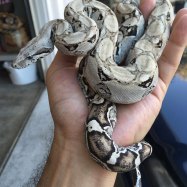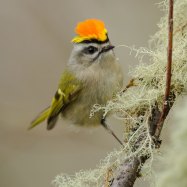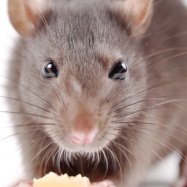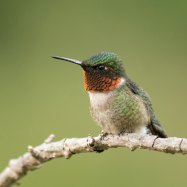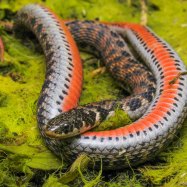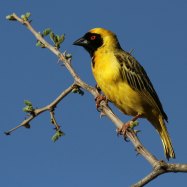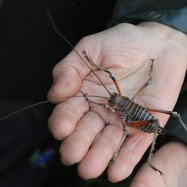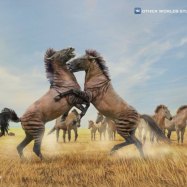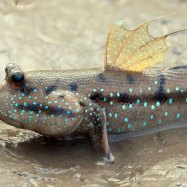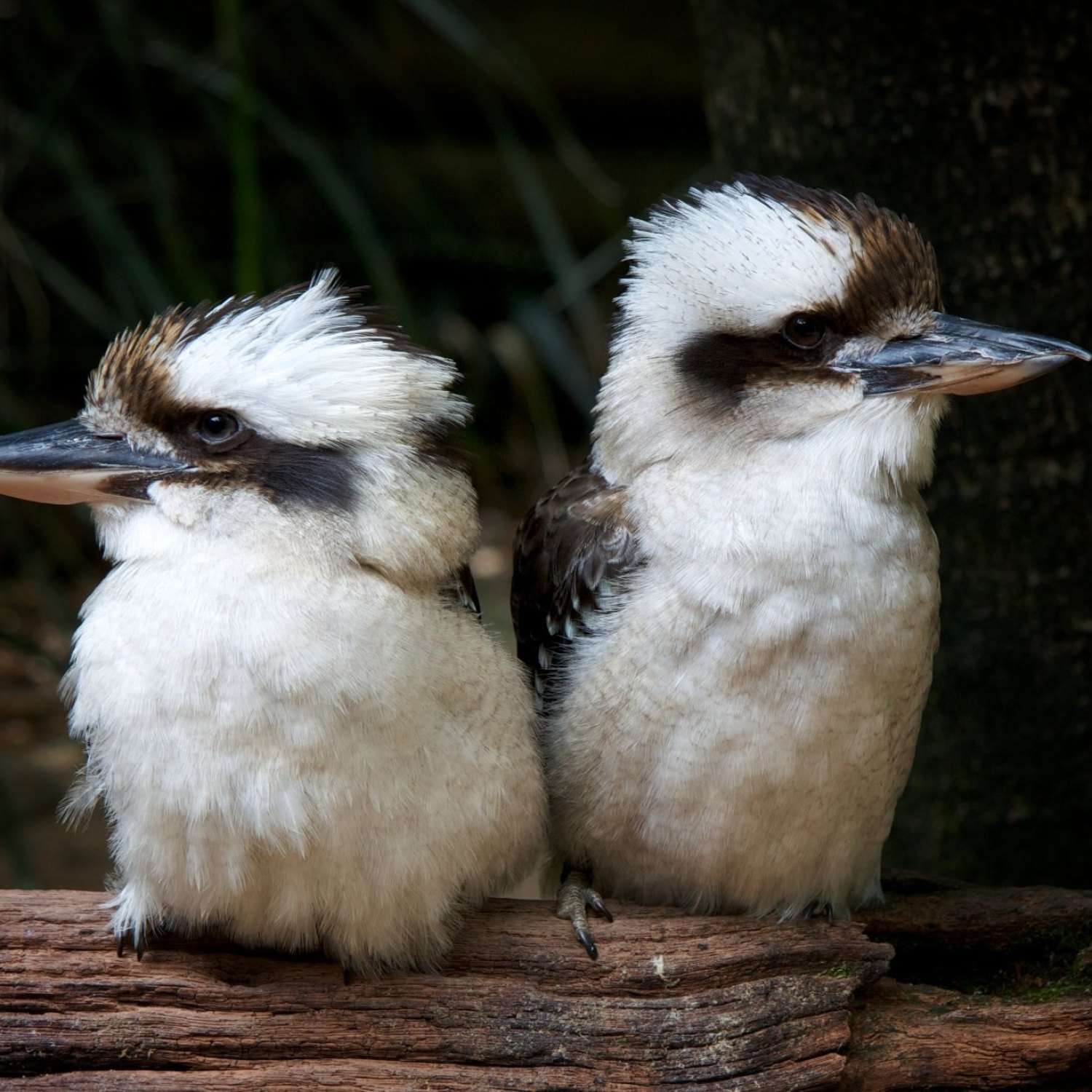
Laughing Kookaburra
16-18 inches
The Laughing Kookaburra is a unique bird found in Eastern Australia and Tasmania. With a stocky and compact body, it measures between 16-18 inches and belongs to the Alcedinidae family. Known for its distinctive laughing call, this bird is a must-see for any wildlife lover. #Kookaburra #Australia #wildlife
Animal Details Summary:
Common Name: Laughing Kookaburra
Kingdom: Animalia
Habitat: Woodlands, forests, and urban areas
The Laughing Kookaburra: A Fascinating Australian Icon
The vast continent of Australia is home to a wide variety of unique and fascinating animals, and one of the most iconic and well-known of these is the Laughing Kookaburra. Known for its distinctive call and playful demeanor, the Laughing Kookaburra is a beloved symbol of Australia's diverse wildlife.Australia's Native Jester
Scientifically known as Dacelo novaeguineae, the Laughing Kookaburra is a bird species in the family Alcedinidae, which is the family of the kingfishers. Its common name, Kookaburra, is derived from the Wiradjuri word "guuguubarra," which refers to the bird's unique call Laughing Kookaburra.Kookaburras are found exclusively in Australia and the island of New Guinea, making them a unique and rare sight in other parts of the world. Within Australia, they are mainly found in the eastern parts of the country, particularly in the woodlands, forests, and urban areas of eastern Australia and Tasmania.
The Look and Sound of a Kookaburra
The Laughing Kookaburra is a medium-sized bird, with a stocky and compact body shape, measuring around 16 to 18 inches in length. Its plumage consists of a brown and white coloration, with a lighter beige color on its head and neck, and darker brown feathers on its wings and back.One of the most recognizable features of the Laughing Kookaburra is its large, curved bill. This powerful and sharp bill is used for catching and feeding on its prey, which mainly consists of insects, small mammals, lizards, and snakes. They have a unique feeding method, where they hunt from perches and then swoop down to catch their prey with their strong beak.
However, what truly sets the Laughing Kookaburra apart is its unmistakable call. The call of the Laughing Kookaburra is often described as sounding like laughter, and it is this distinct sound that has made it a beloved symbol of Australia Loach. It is a common sight to see these birds perched on trees, emitting their loud and joyous call, earning them the nickname "the bushman's alarm clock."
A Fascinating Family Life
The Laughing Kookaburra is a social bird, living in large family groups called "kookaburra clans." These clans consist of a dominant breeding pair and their offspring from previous seasons, along with any helpers in the group. These helpers are usually young birds from the previous season who assist in caring for and feeding the new brood.Once the breeding season arrives, the dominant pair courts and mates, often engaging in a charming ritual of beak dueling and bowing to each other. The female then lays three to four eggs, which are incubated by both parents for around 25 days. Once the chicks hatch, they are fed and cared for by the entire clan, ensuring a better survival rate.
One interesting fact about Laughing Kookaburras is that they are cooperative breeders, meaning that the dominant pair and helpers work together to raise the young. This cooperative behavior is a crucial part of their survival, as it helps strengthen the family unit and provide better protection for the chicks.
An Unlikely Urban Dweller
Although Laughing Kookaburras are mainly found in woodlands and forests, they have also adapted well to urban areas, making their homes in parks, gardens, and even golf courses. This adaptability is due to their opportunistic feeding habits, where they can thrive on a variety of prey found in urban areas, such as worms, snails, and insects.Their presence in urban areas has also been beneficial for humans, as they act as natural pest control, consuming large numbers of insects and rodents. Their social and friendly nature also makes them popular with bird watchers and tourists, who can observe and interact with them in their natural habitat.
A Conservation Success Story
The Laughing Kookaburra is one of the few bird species in Australia that is not currently under threat of extinction. They are classified as "Least Concern" on the IUCN Red List, with a stable and healthy population. This conservation success story can largely be attributed to the bird's adaptability and resilience, as well as the conservation efforts by the Australian government to protect its natural habitat.However, one threat that the Laughing Kookaburra, and many other Australian wildlife species, faces are habitat loss due to human development. As urban areas expand and forests and woodlands are cleared for infrastructure, the natural habitat of these birds is shrinking. Therefore, it is essential to continue educating the public about the importance of preserving and protecting the natural environment for these iconic Australian birds.
Unlocking the Secrets of Nature's Laughter
Other than being a beloved symbol of Australia, the Laughing Kookaburra also has an important role in scientific research. Its unusual vocalizations have been a source of interest for scientists and researchers, who have studied its vocal communication to better understand various aspects of animal behavior and evolution.Studies have shown that the Laughing Kookaburra's call is not just a form of communication, but also serves as a warning signal to other animals. By analyzing and studying the frequency and pitch of the Laughing Kookaburra's call, researchers have been able to identify potential predators in the surrounding area.
Additionally, the unique sound and pattern of the Laughing Kookaburra's call have inspired advancements in voice recognition and speech technology. Researchers have used the bird's call to develop algorithms that can recognize and transcribe different bird sounds, which can be used for various purposes, such as monitoring threatened bird species and ecosystem health.
A National Treasure
In conclusion, the Laughing Kookaburra is not just a bird, but a national treasure of Australia. From its distinctive call to its playful and social nature, this unique bird is a symbol of resilience and adaptability. As Australia's urban areas continue to expand and threaten the natural habitat of these birds, it is crucial to appreciate and protect the unique wildlife that makes this country so remarkable. So, the next time you hear the sound of laughter in the bush, it might just be the cheerful call of a Laughing Kookaburra.

Laughing Kookaburra
Animal Details Laughing Kookaburra - Scientific Name: Dacelo novaeguineae
- Category: Animals L
- Scientific Name: Dacelo novaeguineae
- Common Name: Laughing Kookaburra
- Kingdom: Animalia
- Phylum: Chordata
- Class: Aves
- Order: Coraciiformes
- Family: Alcedinidae
- Habitat: Woodlands, forests, and urban areas
- Feeding Method: Carnivorous
- Geographical Distribution: Australia and New Guinea
- Country of Origin: Australia
- Location: Eastern Australia and Tasmania
- Animal Coloration: Brown and white
- Body Shape: Stocky and compact
- Length: 16-18 inches
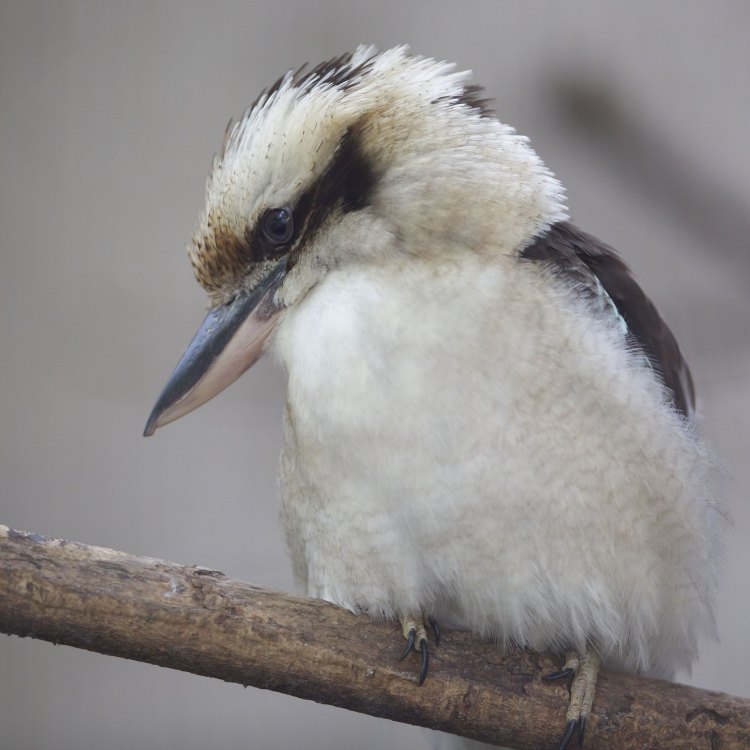
Laughing Kookaburra
- Adult Size: Medium-sized
- Average Lifespan: 10-15 years
- Reproduction: Monogamous
- Reproductive Behavior: Nest in tree hollows
- Sound or Call: Loud, cackling laugh
- Migration Pattern: Non-migratory
- Social Groups: Live in family groups
- Behavior: Diurnal and territorial
- Threats: Habitat loss and predation
- Conservation Status: Least Concern
- Impact on Ecosystem: Keystone species for maintaining ecological balance
- Human Use: Tourist attraction and bird-watching
- Distinctive Features: Large head with a strong, curved beak
- Interesting Facts: Known for its loud vocalizations and ability to hunt snakes
- Predator: Snakes, goannas, and birds of prey
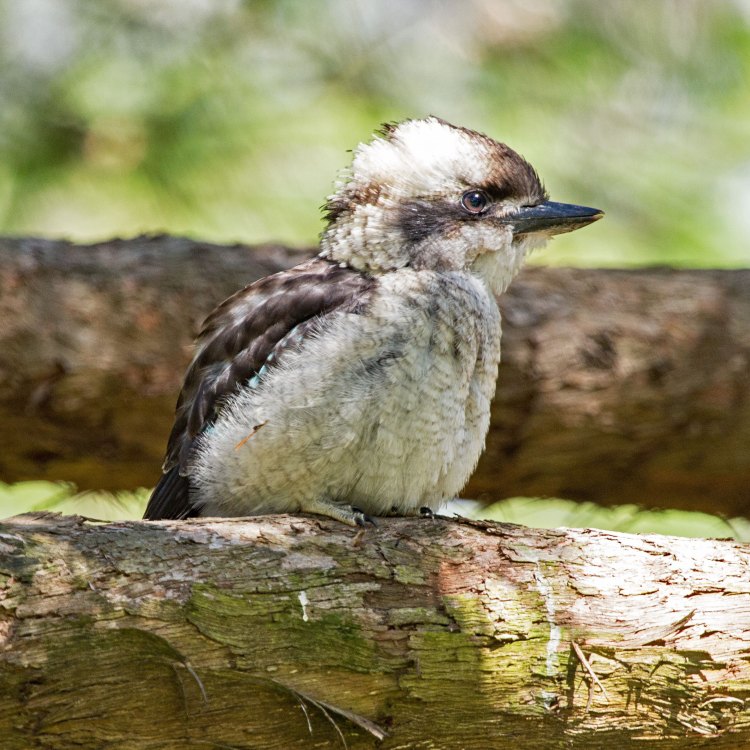
Dacelo novaeguineae
The Laughing Kookaburra: The Jovial Bird of the Australian Outback
The Australian outback is a vast, rugged landscape that is home to a diverse range of flora and fauna. Among its unique inhabitants is a bird known for its unmistakable call and comical appearance - the Laughing Kookaburra. With its large head, cackling laugh, and unique behaviors, this bird has captured the hearts of many and become a symbol of Australian wildlife.Adult Size and Average Lifespan
The Laughing Kookaburra is a medium-sized bird, measuring around 16-18 inches in length and weighing 10-16 ounces PeaceOfAnimals.Com. While there is no significant difference in size between males and females, the females have a slightly larger bill. These birds have a lifespan of approximately 10-15 years, with some individuals living up to 20 years in captivity.
Reproduction and Reproductive Behavior
Laughing Kookaburras are monogamous birds, meaning they mate with one partner for life. They are known to form strong bonds with their mates and will often stay close to each other throughout the year. During the breeding season, they will engage in courtship displays, including offering food, preening, and singing to their potential mate.
Nest in Tree Hollows
These birds are cavity nesters, which means they nest in holes or cavities. In the wild, they often use tree hollows as their nesting sites, while in urban areas, they may also use artificial nest boxes. Once a pair has found a suitable nest site, they will line it with leaves, grass, and bark to make it more comfortable for their eggs.
Sound or Call
The Laughing Kookaburra's most distinctive feature is undoubtedly its loud, cackling laugh Largemouth Bass. It is a familiar sound in the Australian outback and is often described as sounding like a group of people laughing. While it is commonly believed that this call is a form of communication between family members, research suggests that it serves to communicate territorial boundaries and attract potential mates.
Migration Pattern
Unlike many other bird species, Laughing Kookaburras are non-migratory, meaning they do not undertake long-distance journeys. Instead, they remain in their territories year-round, which can range from 4-10 acres in size. These birds are incredibly territorial and will defend their territory fiercely, vocalizing loudly to warn off intruders.
Social Groups and Behavior
Laughing Kookaburras are highly social birds and live in family groups made up of a breeding pair and their offspring from previous years. These groups are also known as "clans," and they often roost together at night, sharing parental duties and cooperating in hunting for food. They are diurnal birds, meaning they are active during the day, and spend their time perched on branches, scanning the ground for prey.
Threats
As with many other species, the Laughing Kookaburra faces numerous threats in the wild. One of the most significant threats is habitat loss, as extensive land clearing for agriculture and urbanization has reduced the availability of suitable nesting sites. Predation by snakes, goannas, and birds of prey is also a threat, with young birds being most vulnerable. Additionally, these birds are at risk of accidental injury or death from human activities, such as collisions with cars and windows.
Conservation Status and Impact on Ecosystem
Despite the various threats they face, the Laughing Kookaburra is currently listed as Least Concern on the IUCN Red List of Threatened Species. This is primarily due to their large population size and wide distribution across Australia. However, while their numbers are still relatively stable, they are facing population declines in some areas.
These birds play a crucial role in maintaining the ecological balance of their habitats, making them a keystone species. They feed on a wide range of prey, including small mammals, snakes, and insects, and by controlling their populations, they prevent any one species from becoming dominant and disrupting the ecosystem's natural balance.
Human Use and Distinctive Features
The Laughing Kookaburra's loud vocalizations and unique appearance have made them a popular tourist attraction and a favorite bird amongst birdwatchers. In many zoos and wildlife reserves, they are often hand-fed by visitors, making them a well-known and adored species worldwide.
One of the most distinctive features of the Laughing Kookaburra is its striking appearance. They have a large head with a strong, curved beak, which they use to catch and crush their prey. They also have a short, stocky body, short legs, and a long tail, giving them a comical appearance that has led to them being nicknamed the "bushman's clock."
Interesting Facts
Aside from their loud calls and unique appearance, Laughing Kookaburras also have some other interesting facts that make them stand out. These birds have a special adaptation in their eye that allows them to maintain a precise horizontal position while hunting. This helps them locate their prey more accurately, making them efficient hunters.
Another interesting fact is that these birds are famous for their ability to hunt snakes, including venomous ones. They will often use their beak to pluck a snake out of the ground and then smash it against a tree or rock before eating it. This behavior has earned them the nickname "bushman's alarm clock" or "bushman's clock."
Predator
While Laughing Kookaburras are apex predators and have no natural predators, they are still vulnerable to attacks by snakes, goannas, and birds of prey. In these instances, they will defend themselves by using their sharp beaks and powerful talons. They may also call for backup from their family group, and their loud calls can alert other animals in the area to the danger.
In conclusion, the Laughing Kookaburra is a truly unique and remarkable bird found in the Australian outback. From its loud vocalizations to its ability to hunt snakes, this bird has captured the imaginations of many. And with its crucial role in maintaining the ecological balance of its habitat, it is evident that the Laughing Kookaburra is not just a funny-looking bird but a vital and integral part of the Australian ecosystem. So, if you ever find yourself in the Australian outback, keep an eye out for these jolly birds and listen for their unmistakable call – you may just spot one perched on a branch, laughing away.
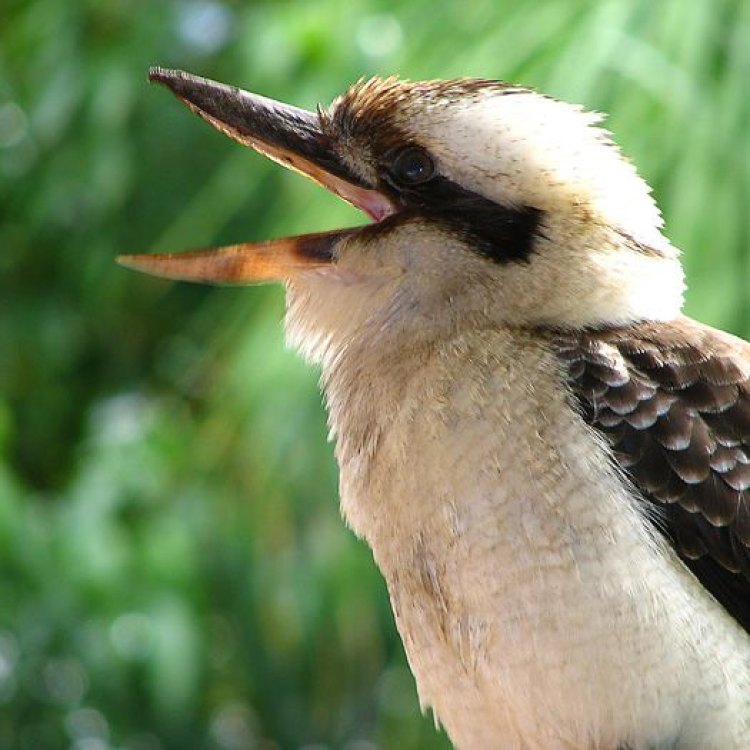
The Laughing Kookaburra: A Fascinating Australian Icon
Disclaimer: The content provided is for informational purposes only. We cannot guarantee the accuracy of the information on this page 100%. All information provided here may change without prior notice.

